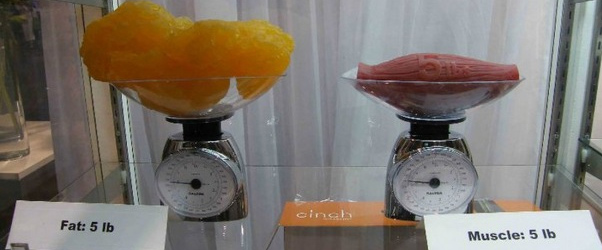In today’s fast-paced world, finding effective ways to lose weight while maintaining overall health can be challenging. Many individuals gravitate towards high-impact exercises like running, which can lead to injuries and burnout. This article explores a variety of low impact workouts, the benefits of strength training, the crucial role of nutrition, and mindful movement practices that can effectively support your weight loss journey.
By focusing on these alternative approaches, you can achieve your fitness goals without the strain of traditional running. Each section provides practical insights and actionable tips to help you create a balanced and sustainable fitness routine tailored to your needs.
In this article you will find:
Effective Low Impact Workouts for Weight Loss
When it comes to losing weight, many people instinctively think of running as the go-to exercise. However, there are numerous effective low impact workouts that not only help you shed pounds but also reduce the risk of injury and strain on your joints. This section will explore various low impact exercises that can enhance your weight loss journey while keeping your body healthy and strong.
Why Choose Low Impact Workouts?
Low impact workouts are ideal for individuals who may have joint issues, are just starting their fitness journey, or prefer a gentler approach to exercise. These workouts allow you to burn calories effectively without the harsh impact on your body that high-impact exercises can cause. Additionally, they often engage multiple muscle groups, providing a comprehensive workout experience.
Top Low Impact Workouts for Weight Loss
- Swimming: A fantastic full-body workout that engages your core, arms, and legs while being easy on the joints. Swimming can burn a significant number of calories depending on your intensity and stroke choice.
- Cycling: Whether on a stationary bike or cycling outdoors, this low impact exercise strengthens your legs and improves cardiovascular health. Aim for a moderate pace or try interval training to maximize calorie burn.
- Yoga: Not only does yoga enhance flexibility and balance, but it can also promote weight loss through various styles such as Vinyasa or Power Yoga. These styles increase heart rate and metabolic rate, aiding in fat loss.
- Pilates: Focusing on core strength, Pilates helps tone muscles and improve posture. It’s a great way to build lean muscle while burning calories, especially when combined with more dynamic movements.
- Low Impact Aerobics: This involves choreographed movements that elevate your heart rate without jumping or running. Classes are widely available, and you can easily find online resources to follow along at home.
- Rowing: Using a rowing machine provides a fantastic low impact workout that targets both the upper and lower body. It’s excellent for building endurance and strength while promoting fat loss.
Incorporating Low Impact Workouts into Your Routine
To effectively incorporate these low impact workouts into your weight loss strategy, consider the following tips:
- Create a Schedule: Aim for at least 150 minutes of moderate-intensity aerobic activity per week, combining different workouts to keep things interesting.
- Listen to Your Body: Pay attention to how your body responds to different exercises. If something feels uncomfortable, don’t hesitate to modify or switch to another workout.
- Pair with Strength Training: Complement your low impact workouts with strength training to build muscle mass, which can increase your resting metabolic rate and help with weight loss.
- Stay Hydrated: Hydration is key in any fitness routine. Ensure you drink enough water before, during, and after your workouts.
Resources for Further Exploration
To deepen your understanding of effective low impact workouts and how to incorporate them into your fitness regimen, consider exploring resources like the British Heart Foundation. Their insights can guide you in personalizing your workouts based on your specific needs and goals.
By embracing these effective low impact workouts, you can transform your fitness journey, enjoy exercising, and achieve your weight loss goals without the strain that traditional running might impose. Next, we’ll delve into the benefits of strength training and how it plays a crucial role in your weight loss journey.
Strength Training Benefits for Shedding Pounds
When embarking on a weight loss journey, many individuals focus primarily on cardiovascular exercises, overlooking the immense benefits that strength training can offer. This section delves into how strength training plays a crucial role in shedding pounds and enhancing overall health, providing unique insights into its advantages and practical applications.
Understanding Strength Training
Strength training, often referred to as resistance training, involves exercises that improve muscle strength and endurance. This can be achieved through various methods, including free weights, resistance bands, and bodyweight exercises. Contrary to common belief, strength training is not solely about bulking up; it can be tailored for weight loss, toning, and improving athletic performance.
Key Benefits of Strength Training for Weight Loss
- Increased Muscle Mass: Engaging in strength training promotes muscle growth. More muscle mass increases your resting metabolic rate, meaning you burn more calories even when at rest. This metabolic boost can significantly aid in weight loss.
- Enhanced Fat Loss: Research indicates that strength training can lead to a more favorable body composition by reducing body fat percentage while preserving lean muscle. This is crucial for achieving a toned appearance.
- Improved Insulin Sensitivity: Regular strength training enhances your body’s ability to use insulin effectively, which helps regulate blood sugar levels. Improved insulin sensitivity can be beneficial for weight management and reducing the risk of metabolic diseases.
- Increased Caloric Burn: While cardio workouts burn calories during the exercise, strength training has a prolonged effect. The body continues to burn calories post-workout as it repairs muscle fibers—a phenomenon known as excess post-exercise oxygen consumption (EPOC).
- Better Functional Fitness: Strength training improves overall functional fitness, making daily activities easier and reducing the risk of injury. This increased functionality can motivate individuals to stay active and engaged in physical activities.
Effective Strength Training Exercises for Weight Loss
Incorporating a variety of strength training exercises into your routine can optimize weight loss. Here are some effective options:
- Squats: A foundational exercise that targets the lower body, squats help build muscle in the legs and glutes while engaging the core.
- Deadlifts: This compound movement works multiple muscle groups, including the back, legs, and core, making it an excellent choice for overall strength.
- Push-Ups: A classic bodyweight exercise that strengthens the chest, shoulders, and triceps, push-ups can be modified to suit different fitness levels.
- Planks: Effective for building core strength, planks also engage the arms and legs, contributing to overall body stability.
- Lunges: Targeting the legs and glutes, lunges improve balance and coordination, making them a functional addition to any workout routine.
Creating a Strength Training Routine
To maximize the benefits of strength training for weight loss, consider the following tips for crafting an effective routine:
- Start with a Balanced Program: Aim to include exercises that target all major muscle groups at least two to three times per week.
- Use Progressive Overload: Gradually increase the weight or resistance you use to continuously challenge your muscles, promoting growth and adaptation.
- Incorporate Variety: Keep your workouts engaging by mixing up exercises, equipment, and training styles to prevent plateaus.
- Focus on Form: Prioritize proper technique to avoid injuries and ensure you are effectively working the targeted muscles.
Resources for More Information
For those interested in exploring more about strength training and its benefits, the New Scientist offers insights into the science behind fitness and how strength training can be optimized for weight loss.
By incorporating strength training into your fitness regimen, you can unlock numerous benefits that support your weight loss goals while enhancing your overall health. In the following section, we will discuss the vital role of nutrition in achieving effective weight loss results.
The Role of Nutrition in Your Weight Loss Journey
While exercise is a crucial component of any weight loss program, nutrition plays an equally vital role in determining your success. Understanding the relationship between what you eat and how your body responds is essential for effective weight management. This section will explore the key aspects of nutrition that can support your weight loss goals, providing actionable insights to help you make informed dietary choices.
Understanding Nutritional Balance
A balanced diet is foundational for weight loss. It encompasses the right proportions of macronutrients—carbohydrates, proteins, and fats—as well as essential vitamins and minerals. Each macronutrient serves a unique purpose in your body:
- Carbohydrates: They are the body’s primary energy source. Opt for complex carbohydrates such as whole grains, fruits, and vegetables, which provide sustained energy and essential nutrients.
- Proteins: Critical for muscle repair and growth, protein helps you feel full longer, reducing overall calorie intake. Sources include lean meats, fish, beans, and legumes.
- Fats: Healthy fats, such as those from avocados, nuts, and olive oil, are necessary for hormone production and nutrient absorption. They also contribute to satiety, helping to control hunger.
Creating a Caloric Deficit
Weight loss fundamentally relies on creating a caloric deficit, which means consuming fewer calories than your body burns. To achieve this sustainably, consider the following strategies:
- Track Your Intake: Use food diaries or apps to monitor your daily caloric intake. Understanding portion sizes and calorie counts can help you make better food choices.
- Prioritize Whole Foods: Focus on whole, minimally processed foods that are nutrient-dense but lower in calories. These foods not only nourish your body but also keep you satisfied.
- Mindful Eating: Pay attention to your hunger cues and practice mindful eating techniques. This involves savoring your food, eating slowly, and recognizing when you are full.
The Importance of Meal Planning
Meal planning can significantly enhance your weight loss efforts by promoting healthier choices and reducing the likelihood of impulsive eating. Here are some tips for effective meal planning:
- Plan Ahead: Dedicate time each week to plan your meals and snacks. This preparation can help you avoid last-minute unhealthy options.
- Batch Cooking: Prepare larger quantities of healthy meals and portion them out for the week. This approach saves time and ensures you always have nutritious options available.
- Include Variety: Incorporate a diverse range of foods in your meal plan to ensure you get all necessary nutrients and to prevent boredom.
Hydration and Its Impact on Weight Loss
Staying hydrated is often overlooked but plays a critical role in weight loss. Water aids digestion, helps maintain energy levels, and can even influence hunger:
- Drink Water Before Meals: Consuming water prior to meals can help you feel fuller, leading to reduced calorie intake during meals.
- Limit Sugary Drinks: Sodas, juices, and energy drinks can add significant calories without providing satiety. Opt for water, herbal teas, or black coffee instead.
- Listen to Your Body: Sometimes, our bodies confuse thirst with hunger. Ensure you’re adequately hydrated to avoid unnecessary snacking.
Resources for Further Learning
For more in-depth information about the role of nutrition in weight loss, the British Heart Foundation offers valuable resources that can help you understand how to tailor your diet to meet your fitness goals.
By understanding and applying these nutritional principles, you can create a solid foundation for your weight loss journey. In the next section, we will explore mindful movement practices that can complement your nutrition and exercise efforts, enhancing your overall wellness.
Mindful Movement Practices to Replace Running
Running is often lauded as one of the most effective forms of cardiovascular exercise, but it is not the only option for those looking to stay fit and lose weight. Mindful movement practices offer an alternative that not only promotes physical health but also enhances mental well-being. This section will explore various mindful movement practices that can effectively replace running, emphasizing their benefits and how to incorporate them into your fitness routine.
Understanding Mindful Movement
Mindful movement refers to physical activities that emphasize awareness of the body and breath. These practices encourage you to connect with your body, promoting relaxation, stress reduction, and improved mental focus. Unlike traditional running, which can sometimes lead to a more rigid, performance-focused mindset, mindful movement fosters a holistic approach to fitness that values the experience over the outcome.
Effective Mindful Movement Practices
- Yoga: Yoga combines physical postures, breath control, and meditation to create a comprehensive workout that improves flexibility, strength, and mental clarity. Styles such as Hatha or Vinyasa can provide a moderate cardiovascular workout while promoting mindfulness.
- Tai Chi: Often described as “meditation in motion,” Tai Chi involves slow, flowing movements that enhance balance, flexibility, and muscle strength. This low-impact practice is particularly beneficial for reducing stress and improving overall well-being.
- Walking Meditation: Walking meditation is a practice that combines the act of walking with focused attention on the movements of the body and the rhythm of the breath. This practice can be done outdoors or indoors and encourages a deeper connection to the environment.
- Dance: Engaging in dance—whether through classes, social dancing, or at home—can be an enjoyable way to get your heart rate up. Dance promotes creativity and self-expression while providing a cardiovascular workout that feels less like exercise and more like fun.
- Qigong: This ancient Chinese practice involves gentle movements, breath control, and meditation. Qigong is designed to enhance the flow of energy (Qi) in the body, promoting relaxation and reducing stress while improving physical health.
Benefits of Mindful Movement
Incorporating mindful movement practices into your fitness regimen can offer numerous benefits:
- Stress Reduction: Mindful movement promotes relaxation and reduces stress levels, which can be beneficial for overall health and weight management.
- Improved Mental Clarity: These practices enhance focus and mental clarity, leading to improved decision-making and a greater sense of well-being.
- Increased Body Awareness: Mindful movement encourages a deeper connection with your body, helping you recognize its needs and respond accordingly, which is essential for injury prevention.
- Community and Connection: Many mindful movement practices are done in group settings, fostering a sense of community and support among participants.
Incorporating Mindful Movement into Your Routine
To effectively integrate mindful movement practices into your lifestyle, consider the following tips:
- Start Small: Begin with short sessions of yoga or Tai Chi, gradually increasing the duration as you become more comfortable.
- Set Intentions: Before each practice, take a moment to set an intention for your session, whether it’s to focus on your breath, release tension, or simply enjoy the movement.
- Explore Different Styles: Experiment with various mindful movement practices to find what resonates best with you. This variety will keep your routine fresh and engaging.
- Join a Class: Look for local classes or online workshops that focus on mindful movement practices. This can provide guidance and enhance your experience.
Resources for Further Exploration
For those interested in diving deeper into mindful movement practices, the Greater Good Science Center offers insightful articles on the mental benefits of movement and mindfulness.
By embracing mindful movement practices, you can find joy in your fitness journey while effectively replacing traditional running. These practices not only support physical health but also foster mental clarity and emotional well-being, enriching your overall quality of life.
This article emphasizes the importance of incorporating effective low impact workouts, strength training, nutrition, and mindful movement practices into your weight loss journey. Low impact exercises such as cycling, yoga, and Pilates provide a gentle yet effective way to enhance cardiovascular health and promote fat loss without straining the body. Strength training is highlighted for its ability to increase muscle mass, boost metabolism, and improve body composition, making it a critical component of any weight loss strategy.
Nutrition plays a vital role in achieving weight loss goals by promoting a balanced diet that includes the right proportions of macronutrients and encourages the creation of a caloric deficit. Mindful movement practices, including yoga and Tai Chi, are recommended as alternatives to running, enhancing both physical fitness and mental well-being. To successfully integrate these practices, individuals should focus on setting intentions, exploring different styles, and maintaining consistency in their routines for optimal results.




